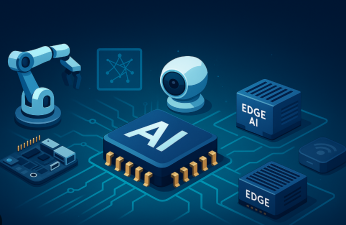In 2025, AI hardware integration will enter a period of full outbreak. This is not a simple product iteration, but a battle for position in a new round of industrial upgrading. When the penetration rate of AI hardware exceeds the critical point of 30%, scenes such as home are undergoing qualitative changes. When hardware becomes the data entrance and software defines the service value, we will witness the birth of N excellent AI hardware in the next few years.
AI+Hardware
AI big models have quietly "drilled" into our lives. They no longer hide behind computer screens and type codes, but have become our "invisible housekeepers".
The AI glasses you wear can automatically navigate and give directions, the "earphones" on your ears can translate 30 languages in real time, and even the watch on your wrist is monitoring your health data. What's even cooler is that since last year, AI has even learned to "make people happy" - robots that can hug and cat toys that can blow air have appeared one after another, and hard-core technology has suddenly become very healing.
At this year's CES (Consumer Electronics Show), the number and depth of AI hardware applications far exceeded previous years, as if previewing how AI technology will be deeply integrated into our lives in the new year.
The hugging robot Mirumi launched by the Japanese team Yukai Engineering can stretch its arms to hug your bag and interact with people by eye contact. The same company's "cooling artifact" blowing cat can blow boiling water from 88℃ to 71℃ in three minutes when hung on a cup, and cool it to 66℃ in five minutes.
The most eye-catching is Romy, a water drop-shaped conversation robot from Japan's Mixi company. It can sing 30 songs and make 150 expressions. It will be shy when being touched on the head and is very sensitive to human touch, including various emotions such as joy, sadness, and surprise. It is equipped with GPT-4o and can even teach recipes - this is not a robot, it is simply a "life assistant".
In the AI+hardware track, the products chosen by entrepreneurs can be roughly divided into two categories: functional products and emotional products. The former adds AI functions to traditional products such as glasses, mice, and headphones; the latter directly launches AI children's toys, smart pets and other products to maximize emotional value.
Industry insiders believe that the mobile Internet dividend has peaked, and AI hardware is still in its early stages, which is a good time to enter the market. AI hardware is the next stage of AI development. By empowering terminal hardware with large models, it is very likely to start the next wave of AI applications.

AI+hardware products have been a great success
For example, Oura smart ring, this ring can monitor users' sleep quality, physical activity, stress level and other key indicators in real time. After waking up, it will give you a "sleep physical examination report" and personalized suggestions to help you improve your sleep quality. This ring has sold more than 2.5 million pieces, and sales are expected to double this year to $500 million.
Another example is Plaud Note, an AI card recorder that can be attached to the back of an iPhone. It can realize functions such as recording, organizing and summarizing. After the user records, Plaud Note can organize, refine and summarize the recording content through AI. This product has delivered more than 300,000 units, with annualized revenue of $100 million, achieving a 10-fold growth for two consecutive years.
There is also Tractive, a GPS tracker for cats and dogs. If the pet slips out of the preset safe area, it will immediately notify the pet owner. Tractive has also launched a subscription model to provide health monitoring services for pets, and generate health reports through AI algorithms to provide disease warnings. In 2024 alone, the annual regular revenue of Tractive subscription services exceeded $100 million.
These success stories show that the market potential of AI+hardware is huge. If you want to break out of the AI hardware circle, you need to have faster technology iteration, user experience that makes people "can't go back after using it", and brand recognition in the hearts of users.
Conclusion
In 2025, AI hardware integration will enter a period of full outbreak. This is not a simple product iteration, but a battle for position in a new round of industrial upgrading. When the penetration rate of AI hardware exceeds the critical point of 30%, scenes such as home are undergoing qualitative changes. When hardware becomes the data entrance and software defines the service value, we will witness the birth of N excellent AI hardware in the next few years.

